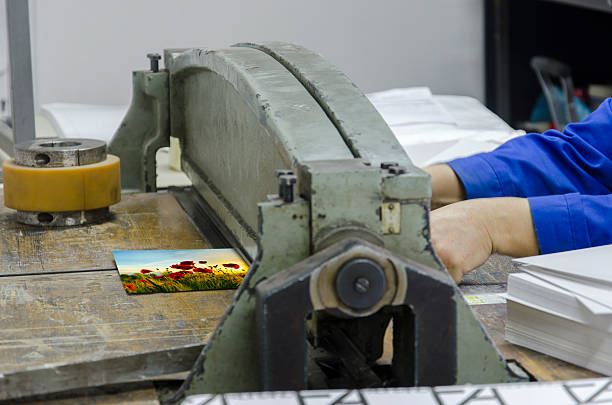Understand The Differences Between Different Types Of Embossment Technique

Embroidery is characterized by presenting a two-dimensional or three-dimensional image on a substrate. It's frequently used as an embellishment for invitations, business cards, packaging, and print material. Considering applying embossing to a print item is essential, so it's important to comprehend the various types custom embossed paper available to determine which ones are best matched for what project. In today's blog, we'll examine the different embossing methods and discover what differentiates them.
Blind embossing is a very popular technique.
Blind embossin is characterized as a traditional embossing process where a pattern or design is presented uncoated. This method focuses on adding texture rather than color to the paper. Blind embossment is often used as a way of adding an added layer to printed business and letterheads, envelopes, and packaging materials. It's the ideal technique for creating a subtle yet understated raised look.
Debossing:
Debossing mimics blind embossment but reverses the process of doing so. Instead, if the image is being embossed, it's debossed deeper into the paper. It creates an outstanding texture of indentation on the printed surface, resulting in a three-dimensional effect. Even though debossing creates a greater and more prominent effect compared to blind embossing, it's still delicate and graceful, ideal to utilize on business cards, invitations, packaging.
Foil embossing is achieved by heat stamping foil onto a paper design.
Foil embossment involves heat stamping a thicker foil over an embossed design. The end result reveals a highly-polished design, enhanced by an appealing metallic and glossy surface. Foil embossin is amazingly versatile, allowing for application on virtually every surface, from paper to cardstock to plastics. Combination Techniques:
Combination Technique Examples:
Combination Techniques refers to using any combination technique mentioned above to achieve a striking effect. For instance, incorporating foil into a debossed design which has also been blind embossed can result in an overwhelmingly stunning look. The usage of various techniques can result in an attractive and impressive variation, especially when incorporating intricate designs, small fonts, or delicate lines.
Sculptured Embossling
Sculptured embossion refers to a method of creating an embossed design with both intricacy and detachment. This method is widely employed for embossing patterns which depict nature, such as leaves, flowers, or tree limbs. It entails a process that involves manually inserting the ink into both surfaces of the printed design to form a three-dimensional sculpture. The outcome is a highly-attractive and eye-catching work that lends itself well to accentuating various printed materials.
Conclusion:
Understanding the various types printing and embossing services is crucial to creating an appealing and effective design on printed materials. Whether creating business cards, wedding invitations, packaging, or brand materials, embossing can enhance the attractiveness of these printed items. By incorporating these technologies or selecting the one best suited to suit, both subtle and dramatic effects can be achieved on printed materials. Allow an experienced provider to guide and guide you in creating the finest embossing that can elevate print products to a higher level.
